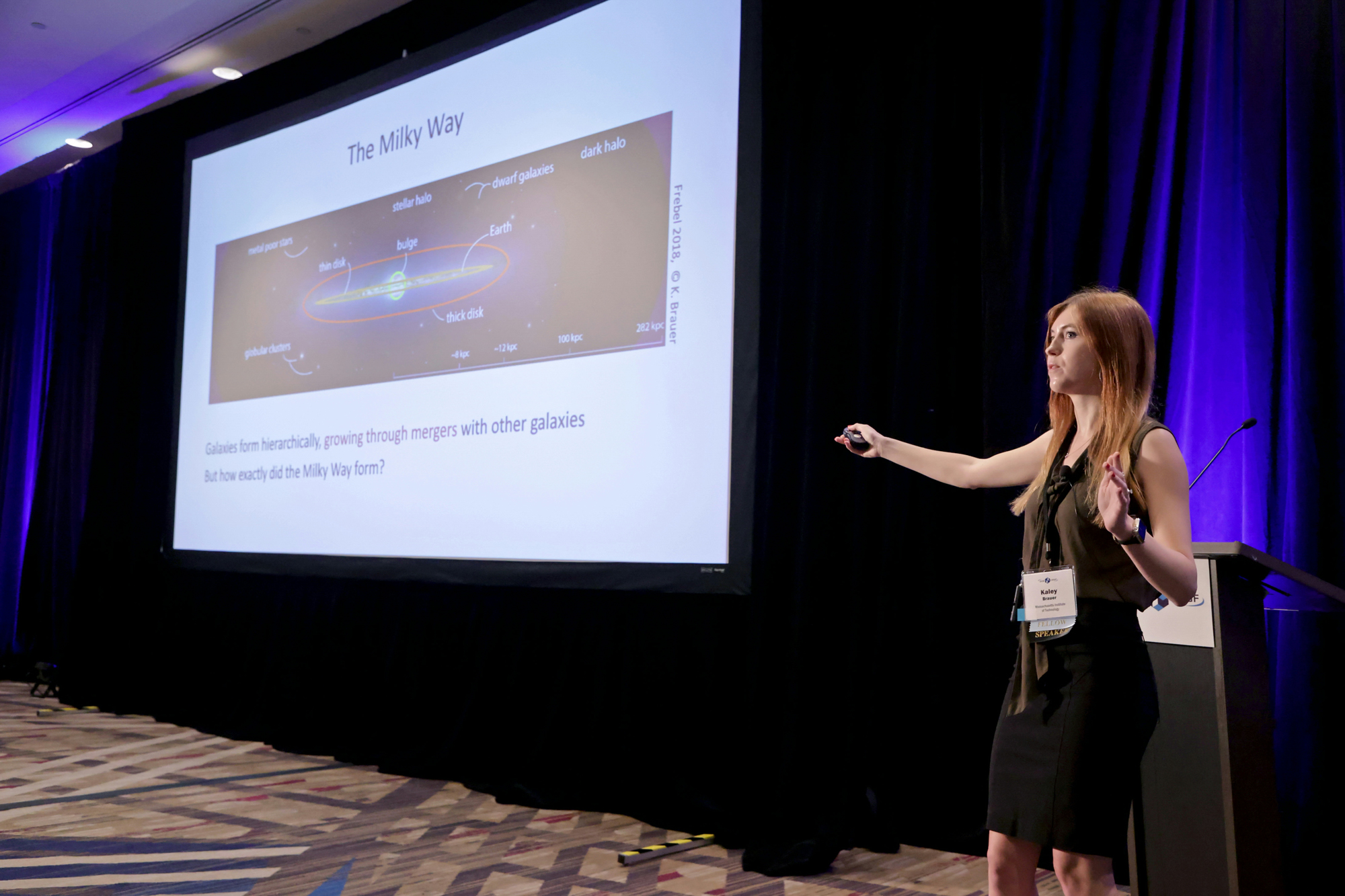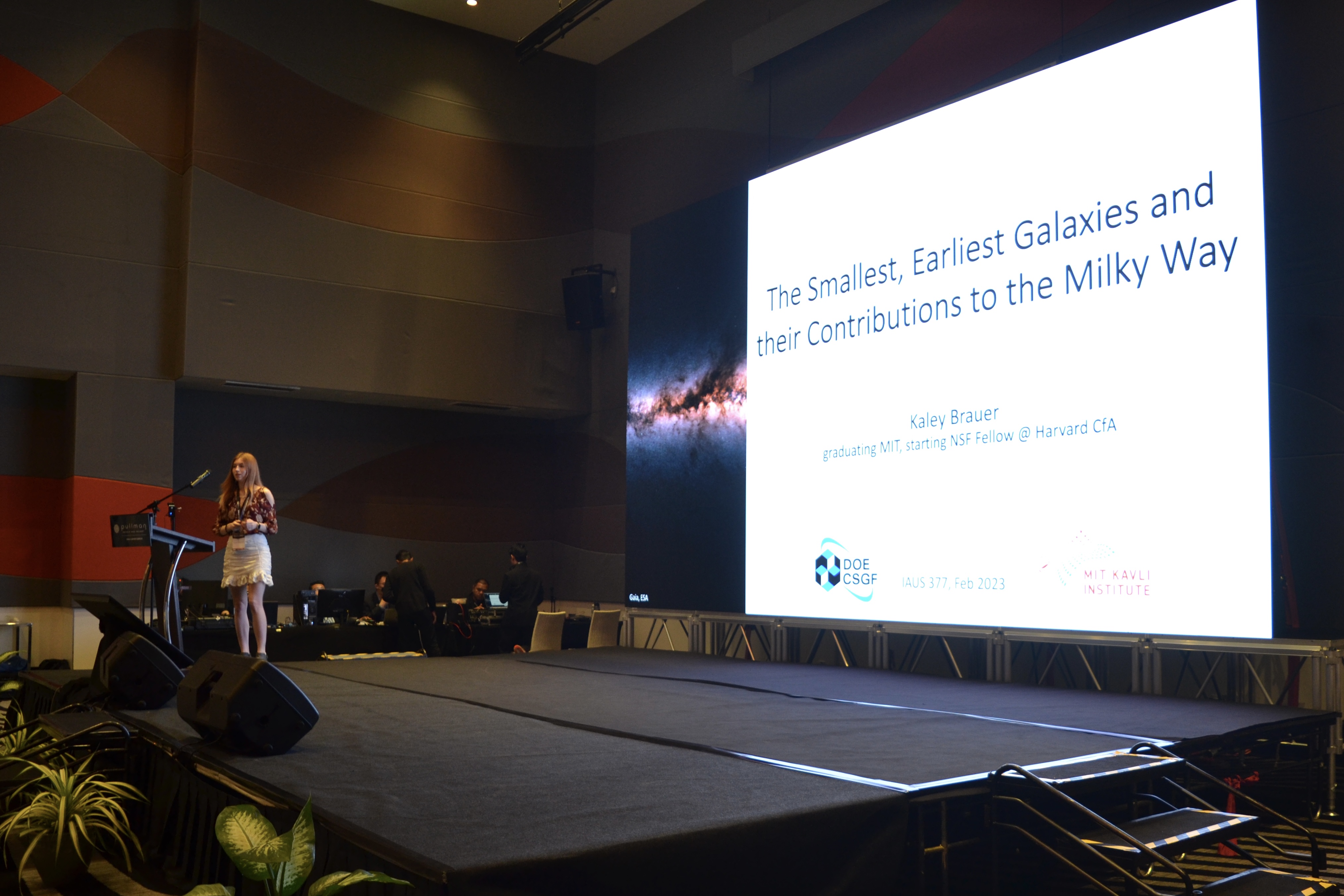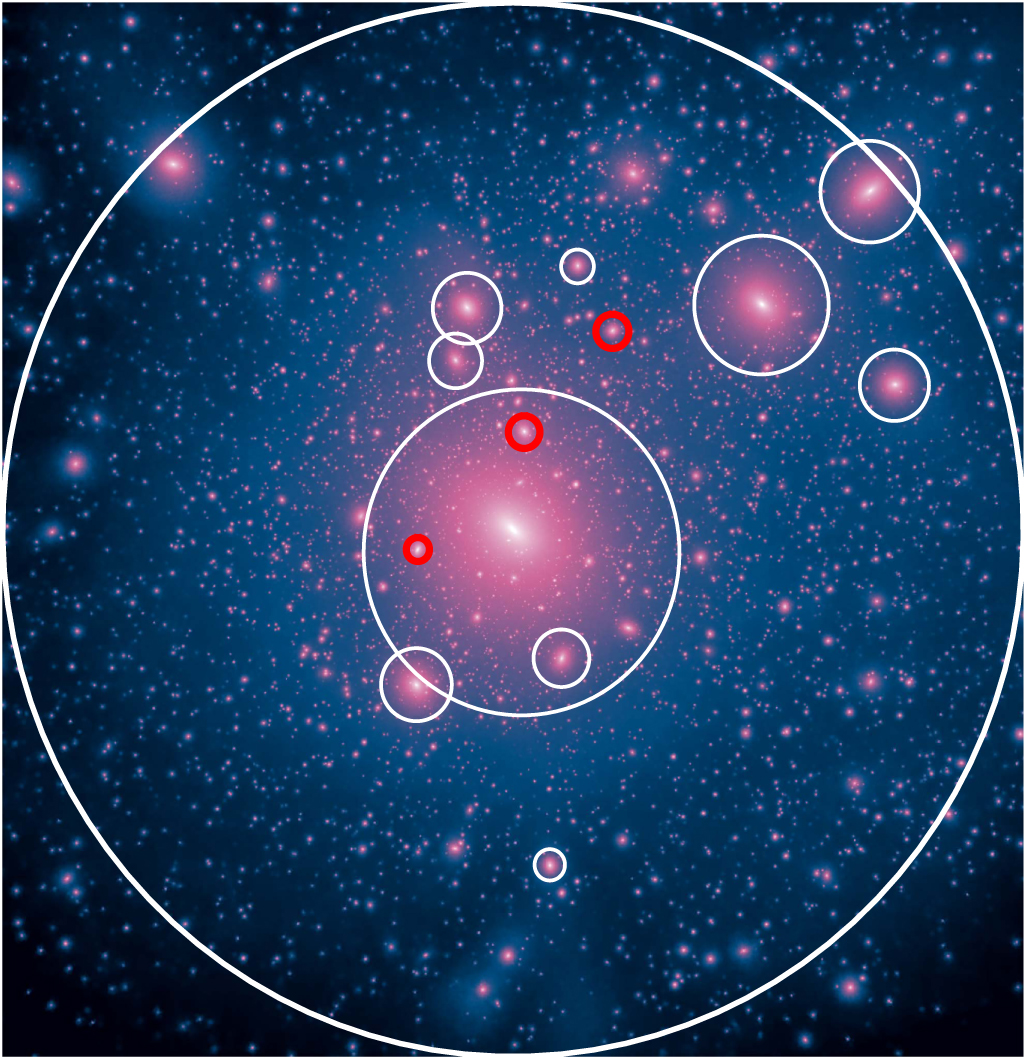|
A Milky-Way-mass dark-matter halo from the Caterpillar simulation suite and its subhalos (circled)
|
Galaxy Formation and Early Universe
I am interested in the formation of galaxies from the smallest dwarf galaxies to our own Milky Way. I also study the origin of chemical elements in the universe, especially heavy elements (e.g. those formed via the rapid neutron capture process). My research requires high performance computing on some of the most powerful supercomputers in the world.
Currently, I am developing extremely high resolution hydrodynamic simulations of early galaxy formation in a cosmological context. These simulations model feedback from individual stars and trace detailed elemental abundances, frontiers which have never before been feasible. I also use cosmological simulations (expanding the Caterpillar project) to create theoretical models of how stellar halos evolve during galaxy mergers. |
PAPERS
click here for all papers
STELLAR HALO MODELING: Unlocking the History of the Galaxy

Anatomy of the Milky Way: Bulge, thin disk, thick disk, stellar halo
The motions and chemical composition of the stars currently present in the extended outskirts (called the “stellar halo”) of the Milky Way preserve a record of the Galaxy’s formation history. Large galaxies form by "eating" (aka, merging with) many smaller galaxies to grow larger. While most of the stars in the center and disk of a galaxy are formed in situ, the stars in the stellar halo primarily originated from the many small galaxies that the central host galaxy accreted over billions of years. Astronomers have recognized the incredible potential of the information stored in the halo stars and are in the process of collecting revolutionary amounts of data on the Milky Way stellar halo. Large dedicated satellite missions such as Gaia (which aims to make a precise 5D map of the stars in our Galaxy) and spectroscopic surveys such as APOGEE are producing positions, 3D velocities, and element abundances for up to a billion Galactic stars.
Galactic archaeologists like myself work to interpret all of this data to learn the history of our Galaxy. By combining large observational datasets with cutting-edge galaxy simulations, we characterize the merger history of the Milky Way.

US Department of Energy | Computational Science Graduate Fellowship Program Review 2022 | Washington DC, USA
UNDERSTANDING ALL THE LITTLE STUFF

Stars forming in simulations of early dwarf galaxies (Brauer 2023)
I specialize in the smallest, earliest galaxies that merged into the Milky Way.
Stars from the smallest galaxies (“ultra-faint dwarf galaxies") are relics from the era of the first stars and galaxies, preserving clean signatures of early chemical enrichment. They are also poorly understood ingredients in the formation history of the Milky Way. Currently, we are obtaining a massive amount of chemical abundance data of stars in ultra-faint dwarfs in the Local Group and of metal-poor stars in the Milky Way’s stellar halo that partially originated in ultra-faint dwarfs. The problem is that chemical abundance observations are outpacing theoretical models. We have a wealth of data, but we cannot leverage the full detail within it. Current state-of-the-art chemical evolution models cannot model the full abundance distributions because they assume instantaneous formation of clusters of stars with homogeneous mixing of yields. New, more detailed models are necessary to fully utilize the data to explore complex galaxy formation processes including metal mixing, hierarchical galaxy merging, bursty star formation, and variations across different galaxies.
To study precisely how stars formed in the earliest galaxies, I am producing the first cosmological simulation of dwarf galaxies with individual stars, detailed chemical yields, and highly-resolved metal mixing. This will allow star-by-star comparisons with high-resolution stellar abundance observations. Such a simulation has never been run before because of the difficulty of simultaneously resolving galaxies and individual stars and gas, but for the first time, advances in high performance computing and massive amounts of detailed abundance data make this work both feasible and necessary.

International Astronomical Union Symposium 377 | Kuala Lumpur, Malaysia
